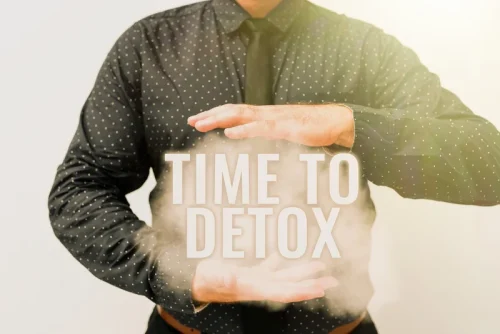Adderall XR capsules are approved for treating ADHD in children ages 6 years and older. People may sometimes misuse Adderall without their https://soberhome.net/alcohol-and-seizures-can-alcohol-or-withdrawal/ doctor’s recommendation or prescription. In some cases, this type of misuse of Adderall can lead to taking too much of the drug.
Is Dexedrine better for ADHD when Adderall causes anxiety and ED?
This is more likely to occur in patients with a history of seizures or heart rhythm problems. You or your child will also need to have your blood pressure and heart rate measured before starting this medicine and while you are using it. If you notice any change in your blood pressure, call your doctor right away.
What is the recreational use of ART, including Truvada?
Adderall may be available through a mail-order pharmacy. Using this service may help lower the drug’s cost and allow you to get your medication without leaving home. Some Medicare plans may help cover the cost of mail-order medications. Before approving mesclun vs mesculin everything you need to know coverage for Adderall, your insurance company may require you to get prior authorization. This means that your doctor and insurance company will need to communicate about your prescription before the insurance company will cover the drug.
Will I need to use this drug long term?
Although not all of these side effects may occur, if they do occur they may need medical attention. Using this medicine with any of the following medicines is usually not recommended, but may be required in some cases. If both medicines are prescribed together, your doctor may change the dose or how often you use one or both of the medicines. Appropriate studies on the relationship of age to the effects of Adderall® tablets and Adderall XR® extended-release capsules have not been performed in the geriatric population. This medication has a boxed warning from the Food and Drug Administration (FDA). A boxed warning alerts doctors and patients about drug effects that may be dangerous.
- Adderall is often misused by people without ADHD to increase focus, concentration, and endurance when studying.
- The actual price you’ll pay depends on your insurance plan, your location, and the pharmacy you use.
- But for anyone who may be linked here, I too have been on 120mg XR throughout the day and as far as I know the max dose is 120mg XR.
- Be sure to talk with your doctor before trying any herb or dietary supplement for treating ADHD.
Adderall & Adderall XR Dosage Guide
You should limit the amount of caffeine you consume while taking Adderall. Misusing Adderall can cause serious side effects, including heart problems and even sudden death. (With dependence, your body needs a drug to function as usual.) The risk of dependence is higher if you take Adderall long term, even if you take it as your doctor prescribed it. Loss of appetite, weight loss, dry mouth, stomach upset/pain, nausea/vomiting, dizziness, headache, diarrhea, fever, nervousness, and trouble sleeping may occur. If any of these effects last or get worse, tell your doctor promptly. For adults with ADHD, the starting dosage of Adderall is 5 mg once or twice per day.
Always consult your healthcare provider to ensure the information displayed on this page applies to your personal circumstances. I had thought it was 40mg, but apparently 120mg from one of the other responses. Do not consume citric acid one hour before or after you dose (oranges, lemons, limes etc) as this will make your stomach more acidic and your adderall less effective. Healthy Diet- Fruits vegetables and lots of whole wheat and Beans. Your specific maximum heart rate is about 175 so you want to take your heart rate to about 160 then back down to 105, then back up again for min. Anyone can calculate this by taking 220 and subtracting your age.
Stop Adderall immediately if you experience these symptoms. Drug interactions may change how your medications work or increase your risk for serious side effects. This document does not contain all possible drug interactions. Keep a list of all the products you use (including prescription/nonprescription drugs and herbal products) and share it with your doctor and pharmacist.
Other factors may also affect whether Adderall is a good treatment option for you. Adderall has a boxed warning about the risk of misuse and dependence. A boxed warning is a serious warning from the Food and Drug Administration (FDA).
These conditions include depression, anxiety, panic attacks, obsessive-compulsive disorder, or premenstrual dysphoric disorder. Adderall is a stimulant that works in the brain to treat symptoms of attention deficit hyperactivity disorder (ADHD). A generic drug is an exact copy of the active drug in a brand-name https://rehabliving.net/binge-drinking-health-effects-signs-and-prevention/ medication. The generic is considered to be as safe and effective as the original drug. To find out how the cost of generic amphetamine/dextroamphetamine compares to the cost of Adderall, ask your pharmacist. The FDA has approved Adderall to treat attention deficit hyperactivity disorder (ADHD) and narcolepsy.
In some cases, Adderall can temporarily cause your pupils (the black centers of your eyes) to dilate (become bigger). However, for people with glaucoma, this effect could worsen their condition. If you experience blurred vision that doesn’t go away with continued use of Adderall, talk with your doctor. How long the medication remains good can depend on many factors, including how and where the medication is stored. Adderall should be stored at room temperature in a tightly sealed and light-resistant container.
Generally, it’s not clear if one of these medications works better than the other. However, individual people may respond better to one than the other. However, individual people may respond better to one over the other. Vyvanse is available as a delayed-release capsule and a chewable tablet, both of which are taken once daily. The chewable tablet may be a good option for those who have a hard time swallowing pills.




















